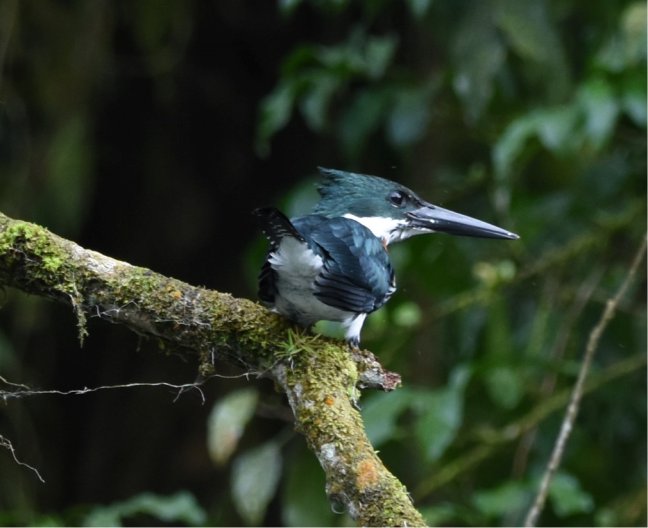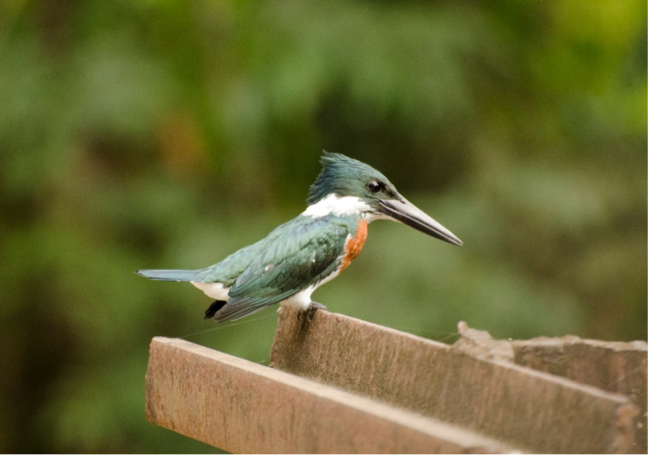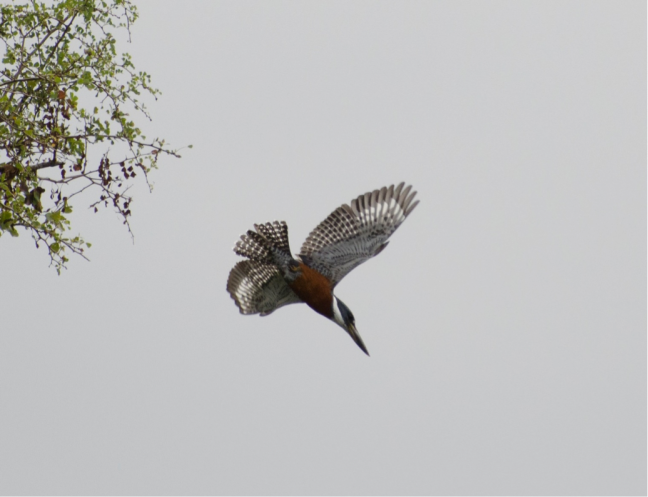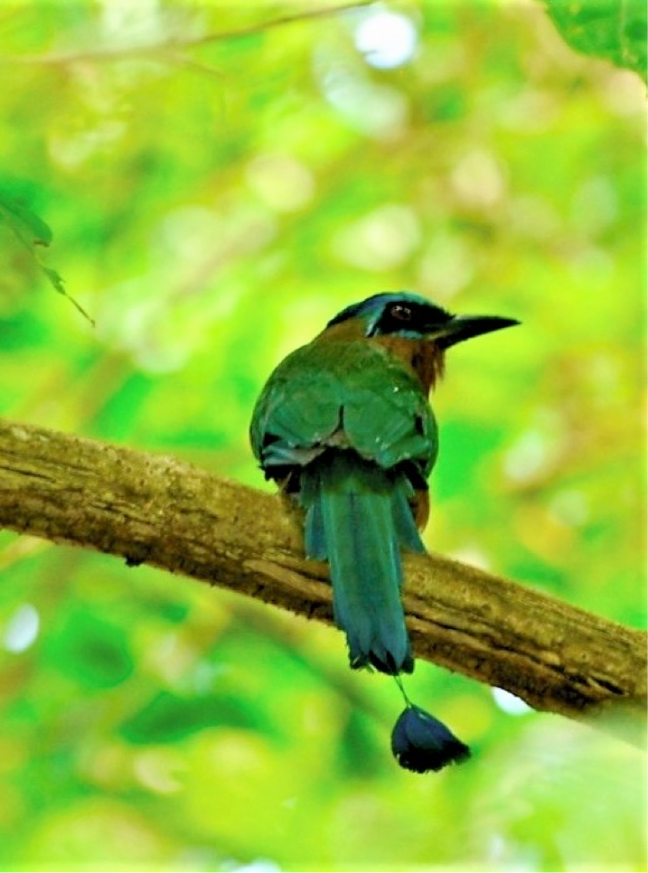Who, fortunate enough to have had a TV between 1951-1953, or to watch later reruns, will ever forget Algonquin J. Calhoun, Andy Brown, Amos Jones and the brothers who gathered at the lodge for The Knights of the Mystic Sea meetings?
Providing much humor was the scheming but henpecked George Stevens, aka “The Kingfish,” and his wife Sapphire. I loved his description of their honeymoon. Kingfish and Sapphire got in a fight and she knocked him cold with a vase. He was out for three days and claimed that those were “the happiest three days of my married life.”
Mea Culpa for the digression: the bird of the day is actually the Kingfisher. They come in 100 or so species, the largest from Australia, the Laughing Kookaburra, “who sits in the old gum tree, and merry merry king of the bush is he.” The Green, Belted, Amazon and Ringed are found in North America. This essay includes photos of three of the four. They all have large heads with a shaggy crest of feathers on the back portion, long pointed beaks, shot legs, stubby bodies and beautifully colored plumage.

Many of the species live very close to rivers, streams or lakes, others live inland in forests and woodlands. They normally nest in tunnels which are dug near shoreline banks. Some species live in arboreal termite nests. Quite handy if there is an urgent need for a midnight snack.
The river dwellers will perch waiting for their prey and, when spotted, the bird will dive into the water and spear the small fish with their sharp beak, then return to the perch, beat the fish unconscious and swallow it head first. The male Amazon Kingfisher pictured below was photographed hunting on the Saripique River in Costa Rica. The beautiful rufous plumage on the breast distinguishes it from the less colorful female.

The Green Kingfisher overlaps in territory to the Amazon, but is distinguishable by its smaller size and, of course, colors. They always live by water. These birds come in various shades of green with white necks and underparts. The males have a bright rufous chest as the Amazon does. The Audubon field guide notes that “this little bird seems oddly disproportioned, rather like a sparrow with the bill of a heron.”

The Ringed Kingfisher is common in the Americas, but in the US it’s rarely found north of the lower Rio Grande in Texas. Described as large and noisy, these are a kick to watch. With deep blue or bluish grey plumage, red belly and a white collar around the neck, they are easy to identify. The female is more colorful with a blue breast separated from the rufous colored lower stomach by a white stripe. They perch high in trees, up to 35 feet, and will dive down head first and spear their prey, rarely hovering over the water. They tend to be territorial and sedentary so when you see one grab a chair or find a tree stump and enjoy the viewing, both beautiful and fun.

A member of the same family is the beautiful Mot Mot. With much the same life style as the Kingfisher, but a diet limited to insects, fruit and lizards, the distinguishing feature of this bird, is that the last portion of her two tail feathers are connected by a thin membrane. Watch for the wiggle.

With appreciation to the numerous organizations and individuals who devote time an energy to the protection of wildlife and habitat, including The National Wildlife Federation, Audubon Society, Wildlife Conservation Society, PAWS Wildlife Center, WWF, International Fund For Animal Welfare, WIN – Wings in Nature, Defenders of Wildlife, Montana Fish, Wildlife & Parks, numerous school districts who employ outdoor & environmental educators and those who volunteers in these programs, as well as the naturalists, and park rangers working for Federal and State governments. Credit to Wikipedia: www.allaboutbirds.org: National Geographic.
Thanks to my grandkids, Montse, Beorn & Rebel, a constant inspiration to respect the natural world and its importance for future generations.
Text by Frank Toller
PHOTOSBYPHRANK.WORDPRESS.COM
Media Services by Molly Bohannon
